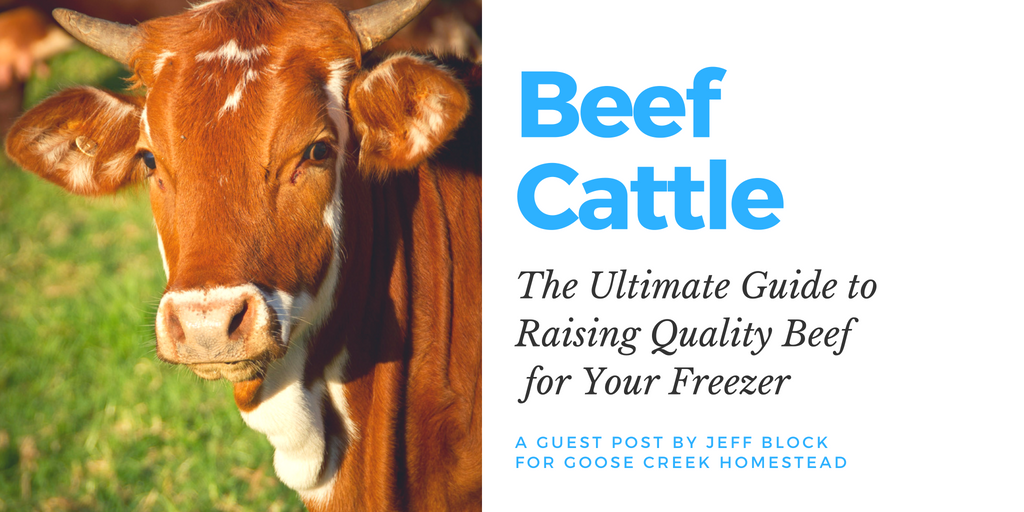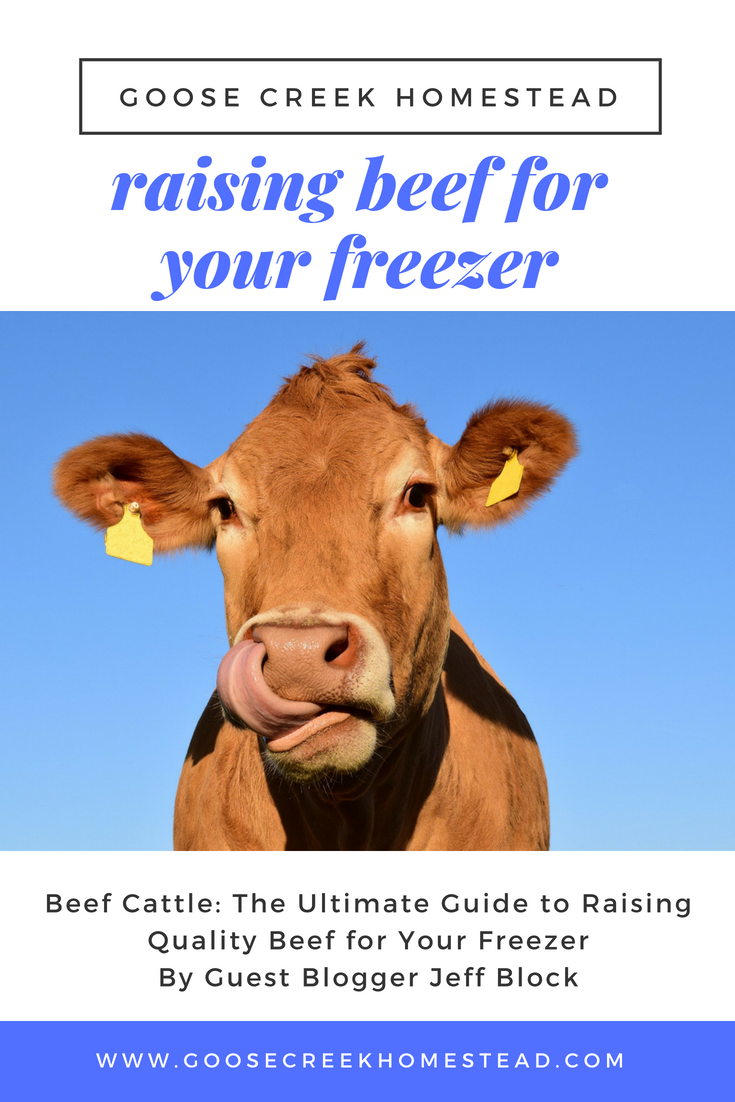If you are anything like me, you have gotten sick and tired of trying to decode all the different labels that are plastered to the meat at your local grocery store. They make even the cheapest of meats sound like they are raised in the wide-open spaces of the Wyoming countryside. How would one ever know how the meat they are eating is really raised? You may even be considering that raising your own beef cattle is the best way to eat the kind of meat that you really want. So, now you must decide how you really want it, and if it is for you.
There are two basic branches when it comes to types of beef; grass-fed and grain-fed. Both are referring to the way that the beef cattle are finished, or the end of their growing state. However, there is a lot of other factors that go into the quality of meat before you get to this point.
All cattle are grass-fed. Yes, even the cheapest meat at the store that you are sure was inhumanely raised started out the same as the most expensive grass-fed organic beef that promises to make you live forever. In this, I am referring to beef cattle and not dairy cattle. Although many people do, I do not recommend raising dairy cattle for beef cattle from birth. There isn’t a big cost savings, and since you will be raising the animal yourself, you will be saving a significant amount of money regardless over buying your meat from the store.
Calves are typically born on pasture. They will spend the first portion of their lives eating grass and drinking their mother’s milk as God had intended. Since it is healthier for calves to spend the early part of their lives in warmer weather conditions, they will be born in the spring and will likely not need hay for food during this stage. There are specific farmers and ranchers who only participate in this part of the process. When the calves are around 600 lbs they are weaned from their mother and will no longer have access to milk. Bull calves will also be turned into steers to prepare them for sale to feedlots. They can also be “implanted” at this time. This means that there has been an implantation of growth hormones into the animal so that it will slowly receive hormones during the feeding stage, which is when weight is put on more rapidly.
This is the best stage for you to purchase your calf and get the biggest bang for your buck. The steer or heifer, whichever you choose, will be around 600-800lbs. I prefer raising steers because they grow more quickly than heifers and will reduce the cost to raise them. If you want your meat to be hormone free, you need to purchase one without an implant. Animals that have been treated with antibiotics should have been separated, but you will want to ensure that it has not received any antibiotics if you are looking to accomplish antibiotic-free meat. The best place to buy is by contacting local farmers. If you are having trouble contacting one, you can purchase a steer from an auction. This can be riskier because animals from different farms or ranches will be in close contact and can transfer diseases to your steer, which will not be noticeable until you get it home.
The biggest debates are around grass-fed beef and grain-fed beef. You will need to decide on how you will want to finish your steer. Grass-fed beef is higher in Omega3 Fatty Acids and lower in overall fat. It also has a more distinct flavor that can take some getting use to and takes 25% more time to get to butcher weight. Grain-fed beef is higher in fat and contains less Omega3 Fatty Acids. However, neither is a good source for Omega3 Fatty Acids and the fat rendered is healthier fat for consumption. There are many misconceptions about grain-fed cattle that help promote the sale of grass-fed beef. Grain is a part of cattle’s natural diet. Since grains are harvested from grass species, they would naturally be consumed, but in less concentration. Grain is often referred to as concentrates and helps the animals convert their food to fat.
Regardless of the option you choose, most of your steer’s diet will be made up of roughage (grass or hay). I prefer to grain finish my steers, because they are several months younger, and have a higher fat content when they are ready for butcher. This makes the meat much more tender and provides a more preferred flavor to my pallet. Typically, this means that a calf born in the spring the prior year will be purchased in the spring the following year and finished over the summer. The steers are then ready late summer, or early fall to be butchered.
Grain-fed meat can be accomplished through different types of grain. I utilize non-GMO corn that I purchase from a local farmer. He delivers it to me in 2-ton sacks. I also add some protein pellets and a mineral salt lick to make sure they are getting enough nutrients. They also have full access to pasture for the entire summer, and if I am raising them over the winter, they have constant access to hay. If you don’t have a local farmer to buy feed from, you can purchase different feed mixtures at a feed store to your preference, and you will also want to make sure that they have access to water at all times.

It is very important to manage the amount of feed you are giving your steer if you are feeding grain. I have had the most success by starting them slowly with about 6lbs of feed per day, then adding 1lb every other day, until I reach 20lbs per day. I feed half of the feed to them in the morning, then the second half in the early evening. If you stick to this regime, your steer should gain 2-3lbs of weight per day. If you know what your steer’s weight was when you bought him, you can calculate the difference between that and 1,200lbs (butcher weight). Divide that by 2.5 and you will get an idea of how many days you will need to raise your steer for, and when he will be ready for the butcher. If you do not slowly introduce the feed to him, his stomachs will not adjust from eating only roughage to the more concentrated grains, which can cause acidosis. He then could stop eating his feed, get scours (diarrhea), a ruptured liver, or even die.
The most important part of raising your own beef cattle for healthy meat is to keep a close eye on your steer. You should spend some time every day watching and learning about his behavior. If his behavior changes, you will know something is wrong so that you can adjust, or seek help from a veterinarian.

It can be very enjoyable and satisfying to raise your own beef cattle. There is a certain sense of connection that you acquire with your food by growing or raising it on your own. It can also be scary, frustrating and challenging. In the end, it will be worth the effort, and a memory that will last well beyond your last bite of steak or hamburger.
Introducing Jeff Block, Guest Blogger for Goose Creek Homestead

Read Next: Multiple Streams of Income: Why Are They So Important to Preparedness


